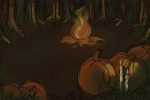Parties, parades and pancakes! When you think of global celebrations, holidays like Christmas or New Year’s Day may come to mind, but there is a far better holiday just around the corner. No joke, this holiday is built around getting together with others to eat all the fattening things in your house. If that’s not something you can get behind — then this is not the article for you. This holiday goes by quite a few different names depending on what and where you are celebrating. In the U.S., we call it Mardi Gras, in the U.K. it’s called Shrove Tuesday (or far better, Pancake Day) and in South America and Spain and Portugal, it’s referred to as Carnival.
How did this holiday start? Like most holidays the Western world celebrates, it all began over 1000 years ago when the emerging Christian Church set guidelines for rituals and celebrations. Leaders of the budding church borrowed celebrations from other religions and created a new calendar. Easter, an especially important holiday, was established to commemorate the resurrection of Jesus.
Nevertheless, it can be a challenge to recruit people to join your emerging religion when other religions have flashy celebrations and festivals. Understandably, you want your holidays to coincide with the festivities of other religions so your followers don’t feel left out. That’s Religion Building 101. A few hundred years after the creation of Easter, the church established 40 days of fasting before Easter — a period otherwise known as Lent.
The 40 days of Lent, according to most Christian doctrine, represent the 40 days Jesus spent in the desert being tempted by Satan. Jesus wasn’t immediately crucified right after those 40 days, however, so the reasoning behind weaving them together with his crucifixion seems a little random. During the 40 days of Lent, celebrants are encouraged to avoid temptations just as Jesus did. Those allurements can include meat, alcohol and pancakes — not specifically pancakes, per se, but basically all of their best ingredients: fats and sugars. You are excused from your fast on Sundays, and if you are Irish, St. Patrick’s Day.
Lent always begins on a Wednesday, and thus the Tuesday before is when the real party begins. During the Middle Ages, Shrovetide was created out of the need for followers to confess their sins right before Lent, which sounds like a bummer, but because they had in-house refrigeration in the dark ages, Shrovetide accidentally morphed into an awesome festival. Since butter, eggs and sugar weren’t allowed during Lent, celebrants feasted on all these ingredients the day before their fast. Thus, Shrove Tuesday, Pancake Day, Mardi Gras (which means Fat Tuesday) and a host of other names boiling down to some sort of Tuesday shenanigans were born. Since Easter involves a complex calendar to determine exactly when it is supposed to take place, Lent, and the Tuesday before, take place on different days every year. In 2023, this perfect Tuesday falls on Feb. 21.
In the United States, the most famous Mardi Gras celebration is in New Orleans, Louisiana. Mardi Gras, or any other Shrove Tuesday observance for that matter, is not a national holiday. It has, however, been around since Louis XIV claimed a part of North America for the French.
The first Mardi Gras parade in New Orleans occurred in 1837, and in modern times the city population doubles during the week before in anticipation of this wild party. The week of Mardi Gras includes hundreds of local traditions including Mardi Gras floats, electing Rex (the king of the carnival) and distributing the iconic purple, gold and green beads. The most widely known Mardi Gras food is the King Cake. King Cakes are round, covered in frosting and sprinkled with traditional Mardi Gras colors. Somewhere inside is a plastic baby. Whoever finds it in their piece gets a year of prosperity, but they also have to bring next year’s cake. You can make your own or order one straight from New Orleans.
In South America, celebrations happen across the continent, but the most widely recognized one is probably Brazil’s Carnival. Like the New Orleans celebration, this epic party lasts for days and features ginormous floats, elaborate and flashy costumes, and legendary street parties. Carnival is a chance for people to dress up in dazzling apparel and samba through the streets. If Brazil is too far from you, try making the national dish of Brazil, the Feijoada. This rich and meaty stew has a humble backstory that will transport your taste buds straight to a party in Rio.
In Europe, you’ll find that sweet treats are the star food of Shrove Tuesday. The U.K. and Ireland celebrate Pancake Day with piles and piles of pancakes. There are pancake races, pancake eating contests and, in some places, a Halloween-reminiscent tradition of knocking from door to door begging for pancakes. The homeowner can expect tricks if the treats are not delivered.
Sweden celebrates with semla, a cream-filled pastry cherished for its richness. Finland’s Laskiainen is a whimsical mix of both Christian and pagan celebrations that has morphed into a mid-winter sliding festival. While many Slavic nations like Ukraine and Belarus are more aligned with the Orthodox Church, and thus their days do not always align on a Tuesday, they still celebrate with delicious blinis, a thin buckwheat pancake that can taste savory or sweet.
Similarly to South America, Portugal and Spain celebrate Carnival with malasadas, delectable and zesty donuts. In a throwback to the period of Portuguese colonialism, Hawaii celebrates Malasada Day on Shrove Tuesday.
This is just a short list of celebrations happening around the world. No matter where you live or how you celebrate, be sure that your Tuesday, Feb. 21 is full of fun, friends, and maybe some pancakes.

















